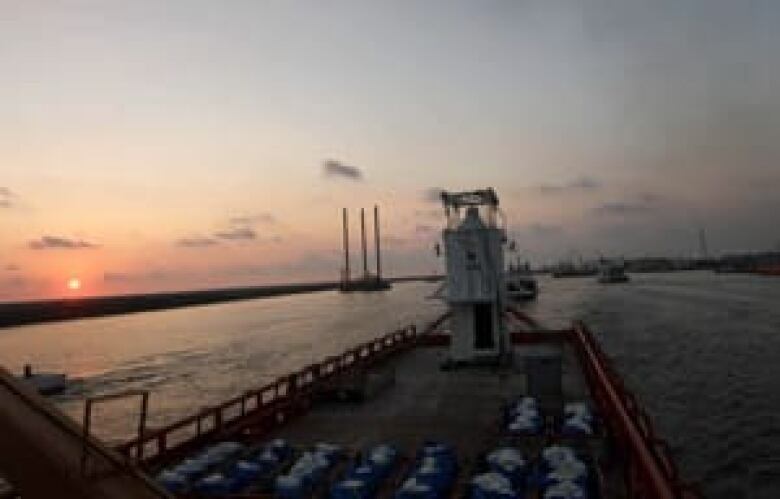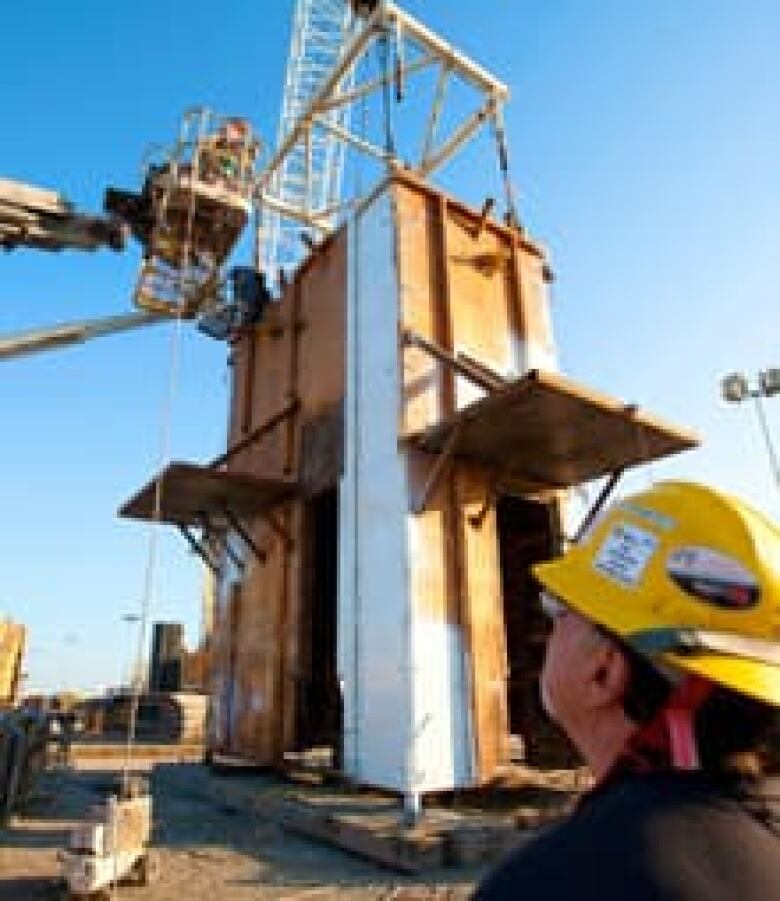Dome on way to oil leak site
A ship carrying a containment dome is on its way to the site of a massive oil leak inthe Gulf of Mexico totry andhelp curb the spread of oil gushing from a wellhead 1,500 metres below the water's surface.
The ship is headed about80 kilometresoff the Louisiana coast where BP crews will try and lowerthe 114-tonne steel and concretecontainment dome the first time the use of such a system has been attempted at this depth.

The containment dome, or cofferdam, was built to cover one of the three leaks in the blown-out undersea well and pump the fuel gushing out of it to a tanker on the water's surface. It is closer in shape to a box than a dome, and is four metres deep, seven metres wide and 12 metres tall.
BP spokesman John Curry said it would be deployed on the seabed by Thursday.
Workers at Wild Well Control Inc. in Port Fourchon, La., put the finishing touches on the contraption on Tuesday.
Turtle deaths probed
Federal fisheries officials are investigating whether aggressive shrimpers or other fishermen are causing the deaths of endangered sea turtles that have been washing up on beaches with no signs of oil. Investigators will look at whether some shrimp boats taking part in an emergency shrimping season ahead of the oil spill removed devices from their nets that are intended to allow turtles to escape, said Sheryan Epperly, sea turtle team leader for the National Marine Fisheries Service. Wildlife officials say at least 35 endangered sea turtles have washed up on coast beaches, but it's not clear what's killing them. Necropsies have shown no signs of oil. Shrimping has long been blamed for sea turtle deaths. Shrimpers are required to install grid-like devices in their nets that are designed to allow turtles to escape. Shrimpers caught without the turtle excluder devices may be fined thousands of dollars and have their catch seized by federal regulators.
BPhopes the cofferdam will collect as much as 85 per cent of the almost 800,000 litres of crude that have been gushing out of the well daily for the last two weeks. The leak is one of three that sprung after an oil rig the multinational petroleumfirm had leased, the Deepwater Horizons, exploded on April 20, killing 11 people, and sank.
BP managed to cap another of the leaks on Tuesday night, the U.S. Coast Guard said Wednesday, but that'snot expected to reduce the overall flow of oil into the Gulf of Mexico.
There are no guarantees the cofferdam procedure will work, as it has never been attempted at such a depth, BP chief executive officerTony Hayward has warned.
The cofferdams were previously used to repair wellheads damaged by Hurricane Katrina in 2005.
Florida prepares
New satellite images show oil has reached the Mississippi Delta and the Chandeleur Islands about 80 kilometres east ofthe Louisiana coast, according to Hans Graber, the director of the University of Miami's satellite sensing facility.

The oil threatens other coastal states, including Florida and Alabama.
Coast guard officials in Florida area on Wednesday announced they have set up a command post in St. Petersburg, Fla., to track the spill's trajectory and plan that state's containment, response and cleanup strategies.
If oil does wash up on Florida's shores, it will most likely be in the form of "tarballs" or "patties," but not "one, dark, great sheen," Cmdr. Tim Close told reporters Wednesday morning.
Calmer seas on Tuesday meant crews could resume more conventional methods of containing the spill, including repairing and replacing booms damaged or disturbed in rough weather over the weekend.
The coast guard also plans to resume controlled burns of oil from the water's surface.
Chemical dispersants piped down to the main leak have significantly reduced the amount of oil coming to the surface, BP said. The company also hoped to shut off one of the smaller of three leaks though it might not reduce the flow much, said Doug Suttles, BP's chief operating officer.
With files from The Associated Press












_(720p).jpg)


 OFFICIAL HD MUSIC VIDEO.jpg)
.jpg)



























































































